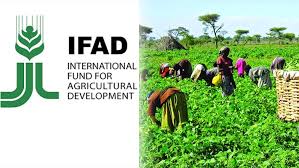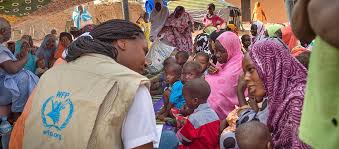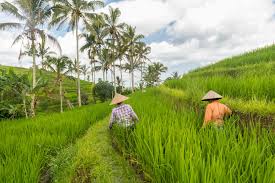This article highlights the need for global efforts to address food and nutrition security, emphasizing the roles of IFAD, FAO, and WFP in fostering a hunger-free world through agricultural initiatives.
Need for Global Collaboration in Agricultural Food Security
Food and nutrition security serves as both an indicator and driver of inclusive economic growth and sustainable development, acting as an investment in the future.
The global scope of malnutrition necessitates a robust, collaborative approach grounded in the realities of smallholder farmers and rural food systems.
Worldwide knowledge-sharing and collaboration now exist, with governments and development partners increasingly prioritizing nutrition-enhancing agricultural investments.
Over 50 countries have committed to the Scaling Up Nutrition (SUN) movement, demonstrating that nutrition is a high global priority.
Role of International Fund for Agricultural Development (IFAD) in Agricultural Food Security
The International Fund for Agricultural Development (IFAD), a specialized UN agency established post-1974 World Food Conference, finances agricultural development projects focused on food production in developing countries.
IFAD provides funding for programs designed to introduce, expand, or improve food production systems and strengthen related policies and institutions.
Recognizing that food insecurity and famine stem from structural poverty issues, particularly in rural areas, IFAD addresses challenges exacerbated by climate change, which undermines efforts to reduce hunger and promote nutrition.
Read Also: Sheep Production Guide
International Fund for Agricultural Development (IFAD) Functions in Agricultural Nutrition Security

Improving food security through enhanced production systems is central to IFAD’s work. The agency mainstreams nutrition, gender, and climate change actions across its programs, financing nutritional education and actions to reshape food systems for better nutrition security.
IFAD promotes dialogue among partners, including agriculture and health ministries, government, and civil society, to strengthen understanding, broker collaboration, and develop pathways for nutrition- and gender-sensitive agriculture.
Combining technical knowledge with investments, IFAD employs food-based approaches, prioritizing women and adolescent girls, who form a significant portion of the agricultural workforce in developing countries and safeguard household nutrition.
Empowering women through improved nutrition knowledge, maternal and adolescent girl nutrition, dietary intake, and hygiene reduces under-nutrition across generations.
Gender-sensitive projects ensure women control resources and promote shared understanding of nutrition’s importance.
IFAD collaborates with national agricultural research centers and international institutes, leveraging specialized research, and actively participates in the United Nations Standing Committee on Nutrition (UNSCN), chaired by IFAD’s Vice-President, Cornelia Richter, to foster dialogue on global nutrition strategies.
Role of Food and Agriculture Organization (FAO) in Agricultural Food Security
The Food and Agriculture Organization (FAO), a UN specialized agency, leads international efforts to defeat hunger and enhance nutrition and food security.
FAO serves as a knowledge network, utilizing expertise from crop scientists, livestock specialists, fisheries experts, nutritionists, and social scientists to collect, analyze, and disseminate development-aiding data.
FAO’s unequivocal goal is a food-secure world free from hunger and malnutrition. For over 60 years, national and international policy, program, and research actions have driven FAO’s core program.
Today, emphasizing household access to sufficient food and nutrition places people at the heart of FAO’s work. By adopting a livelihoods framework, FAO refines socio-economic analysis, disaggregating data by livelihood groups to design targeted interventions for heterogeneous populations.
Interdisciplinary work across technical departments is enhanced through formal and informal working groups focused on livelihoods.
Traditional sectoral projects, especially at local levels, use the livelihoods approach for poverty reduction and food security.
FAO Representations apply this framework for planning and managing country assistance programs, fostering partnerships within the “One UN” initiative.
Food and Agriculture Organization (FAO) Nutrition Programs in Agricultural Development
FAO’s Nutrition Strategy aims to improve diets and nutrition levels using a demand-driven, people-centered approach.
In partnership with the World Health Organization (WHO) and aligned organizations, FAO conducts research, releasing evidence-based data and guidelines on food-based nutrition, including composition, assessment, and indicators for human requirements.
FAO supports countries in evaluating nutrition situations, analyzing options, and implementing agricultural policies and programs that positively impact nutrition. Additional roles include:
1. Sharing Policy Expertise for Agricultural Development: FAO lends decades of experience to member countries in agricultural policy, supporting planning, legislation, and strategies for rural development and hunger alleviation, advocating for resource allocation and organizational structures.
2. Promoting Public-Private Partnerships in Agriculture: FAO provides platforms for collaboration among nations, food industries, and non-profits to support farmers and strengthen the food sector.
3. Fund Mobilization and Management for Agricultural Projects: FAO manages funds from developed countries, banks, and other sources to achieve project goals, collaborating with WFP and humanitarian agencies in crises to protect rural livelihoods.
4. Preventing and Mitigating Agricultural Risks: FAO monitors and warns about risks to agriculture, food, and nutrition, informing countries on risk reduction measures for policies and coordinating disaster response plans.
Read Also: Fattening of Sheep and Goats Guide
Role of World Food Programme (WFP) in Agricultural Food Security

The World Food Programme (WFP), the UN’s food-assistance branch, collaborates with UN entities to achieve the 17 Sustainable Development Goals, prioritizing SDG 2 Zero Hunger to end hunger, improve nutrition, and promote sustainable agriculture.
In 2019, WFP served 97 million people in 88 countries, with two-thirds of activities in conflict zones, funded by voluntary donations from governments, corporations, and private donors.
WFP aims to provide value, increase food choices for beneficiaries, and boost local smallholder production, retail, and financial sectors.
World Food Programme (WFP) Nutrition Programs in Agricultural Systems
WFP has expanded from emergency interventions to address all malnutrition forms, including vitamin and mineral deficiencies, overweight, and obesity. Collaborating with UN agencies, NGOs, and the private sector, WFP supports nutrition interventions, policies, and programs like school meals and food fortification.
Engaging with initiatives like the Committee on World Food Security, Scaling Up Nutrition (SUN), and the UN Decade of Action on Nutrition, WFP involves NGOs, local farmers, producers, retailers, and communities, co-convening the SUN Business Network to integrate private sector partners. Key programs include:
1. Food Assistance for Agricultural Communities: WFP distributes food in scarce areas and provides cash or vouchers where food is available but unaffordable, enhancing choice, reducing exploitation, and supporting local economies.
2. School Meals Supporting Agricultural Economies: School meals encourage education over labor in vulnerable families, benefiting education, gender equality, health, nutrition, social protection, and local agriculture, integrated with health services like malaria control and hygiene guidance.
3. Food Fortification and Smallholder Farmer Support: WFP supports smallholder farmers, critical to a zero-hunger world, through training and market access. Through the Farm to Market Alliance, WFP helps farmers receive information, investment, and support to produce marketable surplus.
In 2019, WFP procured 96,600 mt from smallholder farmers for US$37.2 million across 40 countries, improving livelihoods.
Do you have any questions, suggestions, or contributions? If so, please feel free to use the comment box below to share your thoughts. We also encourage you to kindly share this information with others who might benefit from it. Since we can’t reach everyone at once, we truly appreciate your help in spreading the word. Thank you so much for your support and for sharing!

